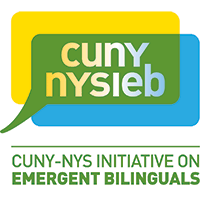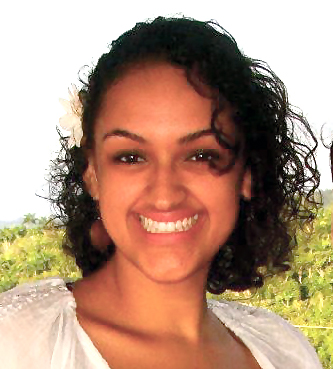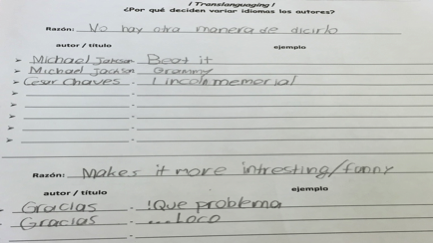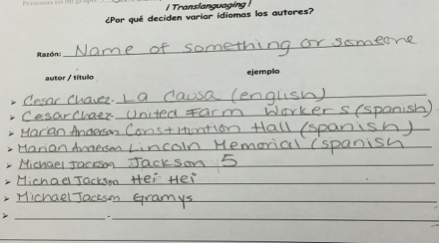CUNY-NYSIEB Ambassador: Gladys Y. Aponte
(Dual Language Bilingual Education Teacher)Meet Gladys….
Gladys Y. Aponte is a Research Assistant with CUNY-NYSIEB and a doctoral student in Urban Education at the CUNY Graduate Center. Prior to pursuing a doctoral degree, Gladys was a dual language bilingual teacher in New York City public schools. Her interest in bilingual education stems from her own experiences as an emergent bilingual student in NYC public schools. Translanguaging has always been an interest of Gladys, as contrasting Dominican varieties of Spanish were always spoken in her home. She was further drawn to the needs of bilingual learners while completing a BA in Elementary Education at Hunter College, and then an M.S.Ed. in Childhood Special Education and Dual Language Bilingual Education at Bank Street College.
Gladys has aimed to cultivate metalinguistic awareness and linguistic confidence beyond her own classroom with creations like Etymation. She is an adjunct instructor at City College and Bank Street College, where she teaches courses in bilingual and TESOL education. Gladys has been working with CUNY-NYSIEB since 2014. She is the author of the forthcoming guide Translanguaging in Dual Language Bilingual Education: A Blueprint for Planning Units of Study. In CUNY-NYSIEB’s webinar, A Blueprint to Incorporate Translanguaging in Dual Language Bilingual Education, Gladys emphasizes the importance of being transparent and exposing students to theories of language acquisition, sociolinguistics, and translanguaging.
Take a Peek in Gladys’s Classroom
Fast Facts
- Type of Classroom: 4th Grade Dual Language Bilingual Education
- Model: Self-contained
- Language Use: In addition to having designated times (alternating days) for students to practice English and Spanish, Gladys designed separate, “transformational translanguaging spaces” in her classroom.
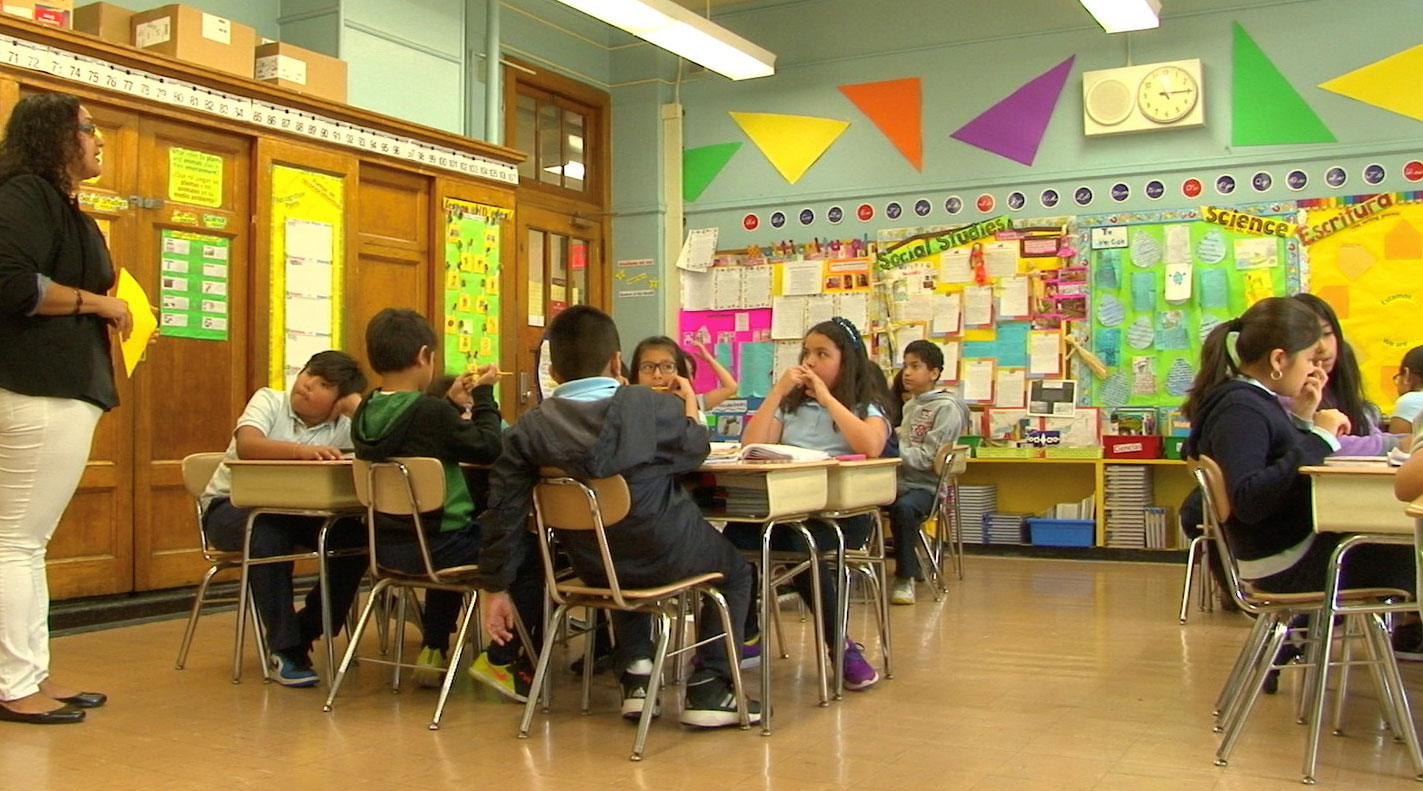
Gladys’s Philosophy and Approach
Gladys has a unique vision of bilingual education. She explains her approach in this episode of our webseries, “Teaching Bilinguals (Even if You’re Not One)“.
She fostered reflection and appreciation of her 4th graders’ individual multilingual identities.
See a Lesson in Action
When it was time to focus on author’s craft — an important 4th grade learning standard — Gladys centered students’ multilingualism as a lens for learning. From the beginning of the school year, Gladys highlighted the many ways and reasons individuals translanguage. During read alouds and reading lessons, the class stopped to consider why an author may have translanguaged, and to talk about the effects specific translanguaging moves can have on readers. Gladys regularly modeled and explained her own translanguaging, and she made space for students to practice and reflect on their own agentive fluid language practices as 4th grade multilingual authors.
Below, you will see video clips from a lesson in Gladys’s unit on author’s purpose, in which the class analyzed several texts they had read throughout the year, including their own writing pieces, and created a list of reasons authors translanguage. Gladys told her students that the lesson would be in both English and Spanish, and she encouraged them to translanguage freely.
These were the lesson’s objectives:
Content Objective: Students demonstrate an understanding of the various reasons authors choose to translanguage by analyzing the effects of specific translanguaging word choices.
Language Objective: Students explain authors’ translanguaging by listing the possible reasons for specific word choices.
Translanguaging Objective: In order to understand why an author chose to translanguage at a specific moment, students use their entire linguistic repertoires to compare and contrast the meanings and effects of phrases in English and in Spanish.
Modeling: Why Julia Alvarez uses buen provecho?
In this clip of the lesson, Gladys models how students may approach the lesson’s objectives. She models curiosity and inquiry about the possible reasons Julia Alvarez may have chosen to include the Spanish phrase buen provecho in the book “How Tía Lola Came to (Visit) Stay.” She elicits responses from students, emphasizing that one specific example of translanguaging can have more than one effect.
Guided Practice: Why Julia Alvarez uses Tiguerito
In this part of the lesson, Gladys guides students in analyzing the effects of the Spanish phrase tiguerito in Alvarez’s book. As students turn-and-talk, Gladys adds some of the reasons that she hears to the chart. After sharing some of the other reasons discussed with their partners, students work in groups to analyze a variety of other texts (texts by bilingual authors, biographies, and other pieces that students had written themselves). These are examples of the handout that students completed when analyzing different texts:
Clip 3: Wrap-up: Sharing two examples from students’ work
After groups shared their findings and contributed reasons to the list on the chart, Gladys wraps up the activity by pointing out examples from two of the groups (one analyzed a student-written biography of César Chavez and another a student-written biography of Helen Keller). Finally, she reminds the class that they can refer to the chart they brainstormed together to guide them in making deliberate word choices in their future writing pieces. The chart below is t is a picture of the full brainstorm of why authors translanguage.
Student-created List: Reasons Authors Translanguage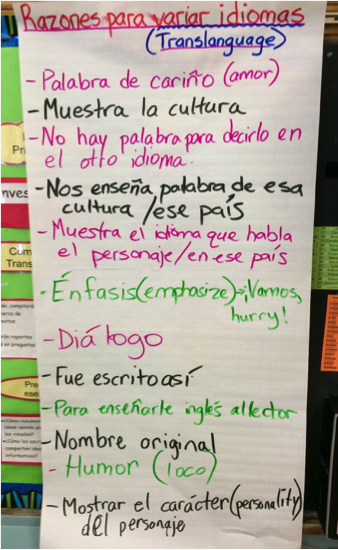
- to use words of affection (love)
- to demonstrate culture
- the words don’t exist in the other language
- shows us a word used in that culture / country
- to create emphasis ¡Vamos, hurry!
- to create dialogue
- to maintain words written as such
- to teach the reader English
- to maintain the original name
- for purposes of humor (crazy)
- to demonstrate a character’s personality
The Importance of this Activity
Gladys felt that this transformative space was essential for several reasons:
- To strengthen students’ craft. The class was getting ready to begin a poetry writing unit. Gladys wanted her students to be more aware and proud when translanguaging, especially when writing about topics intrinsically tied to language, such as multilingualism, culture, and immigration.
- To validate students’ languaging. Multilinguals translanguage naturally. Since Gladys’s students had been discouraged from translanguaging in previous years, many still needed reaffirmation. Recognizing that famous authors do not completely suppress parts of their linguistic repertoires empowers students to utilize their entire linguistic repertoires when writing.
- To boost metalinguistic competence. Students may not use translanguaging as an author’s craft unless they are explicitly encouraged to. Likewise, students may translanguage in their writing, but not reflect on the reasons they do so. Analyzing their choices to use specific linguistic resources boost linguistic awareness and confidence.
- To defend their languaging. Gladys wanted her students to be able to justify their language practices in settings outside of her classroom when necessary. Exploring the many reasons one translanguages can give students the voice to defend their language practices in the future.
- To inspire transformation and innovation. While students recognize that the majority of authors continue to separate languages, Gladys’s students are encouraged to be critical and innovative.
“Translanguaging spaces like these plant seeds of criticality and confidence in our multilingual students.” —Gladys Aponte
Gladys on Language Flexibility in DLBE
In a CUNY-NYSIEB webinar in 2017, Gladys discussed how she incorporates translanguaging scaffolds, documentation spaces, and moments for students to reflect about language into dual language bilingual education classrooms. She spoke with Maite Sánchez, then CUNY-NYSIEB’s Project Director.
Incorporating Translanguaging into DLBE Education
In a CUNY-NYSIEB webinar in 2016, Gladys and her co-authors of A Blueprint to Incorporate Translanguaging in Dual Language Bilingual Education, (forthcoming) Cristian Solorza and Timothy Becker, discussed their flexible, yet thoughtful, approach to language use in their dual language bilingual classrooms.
